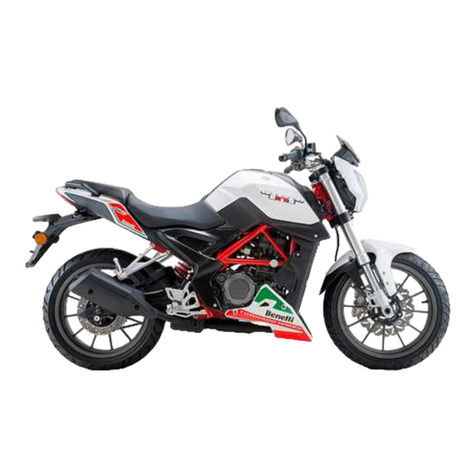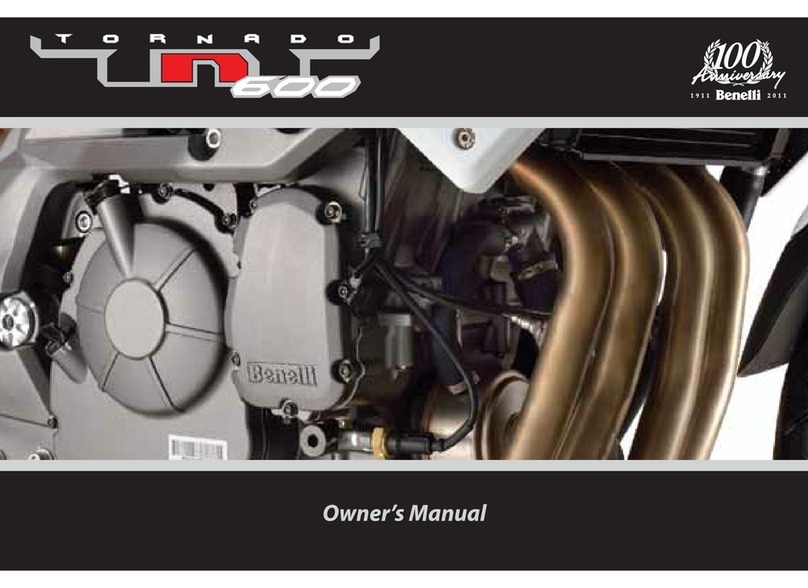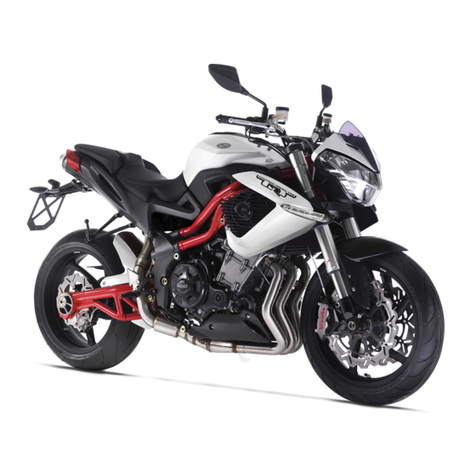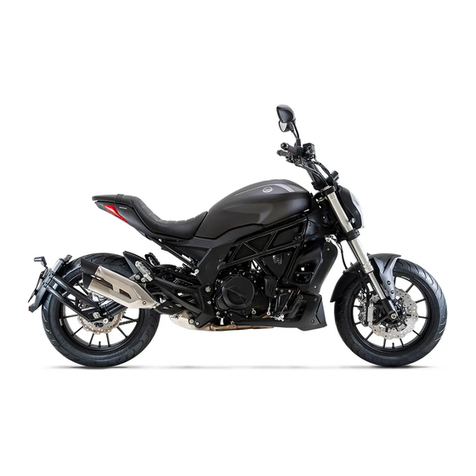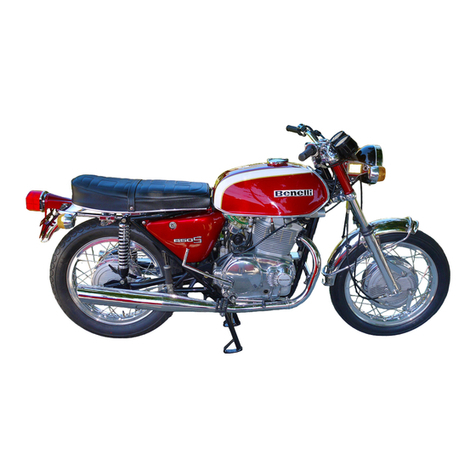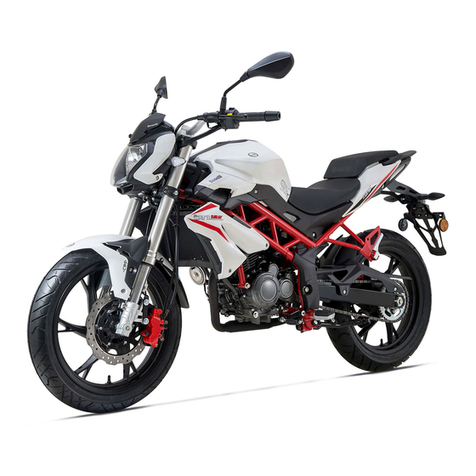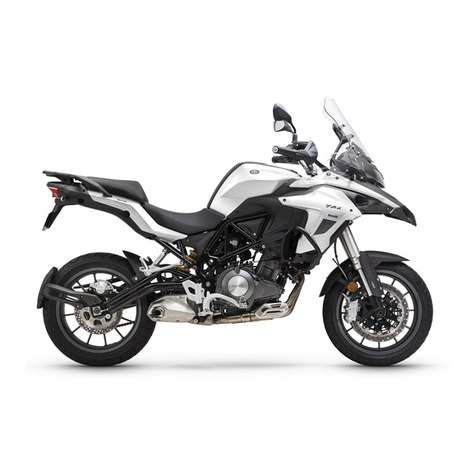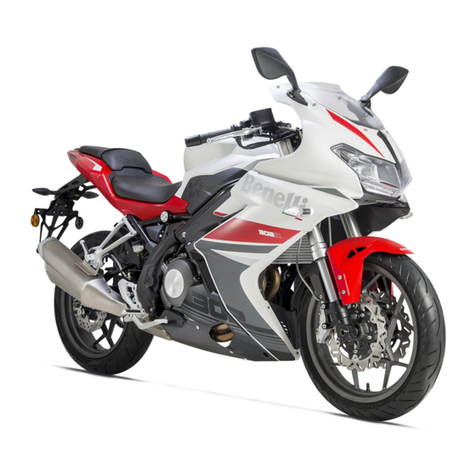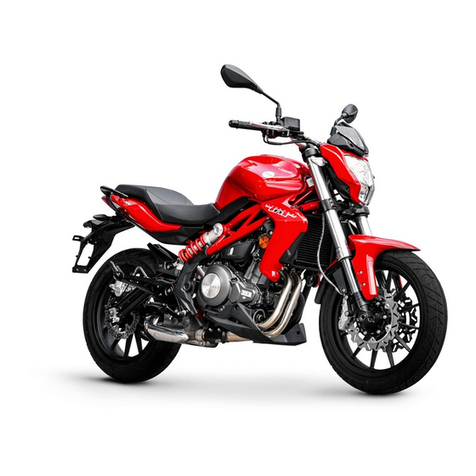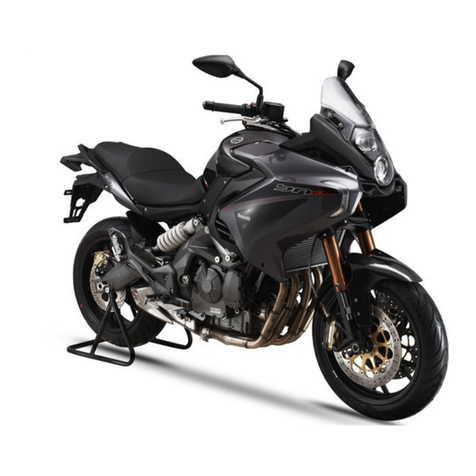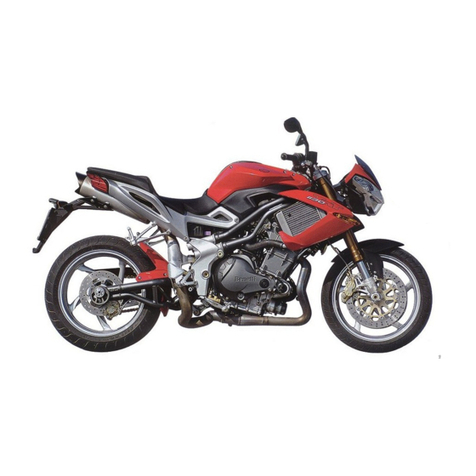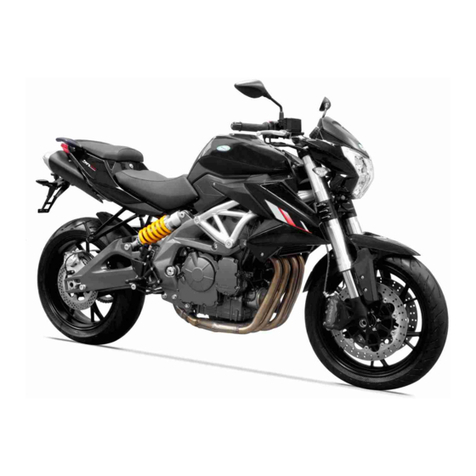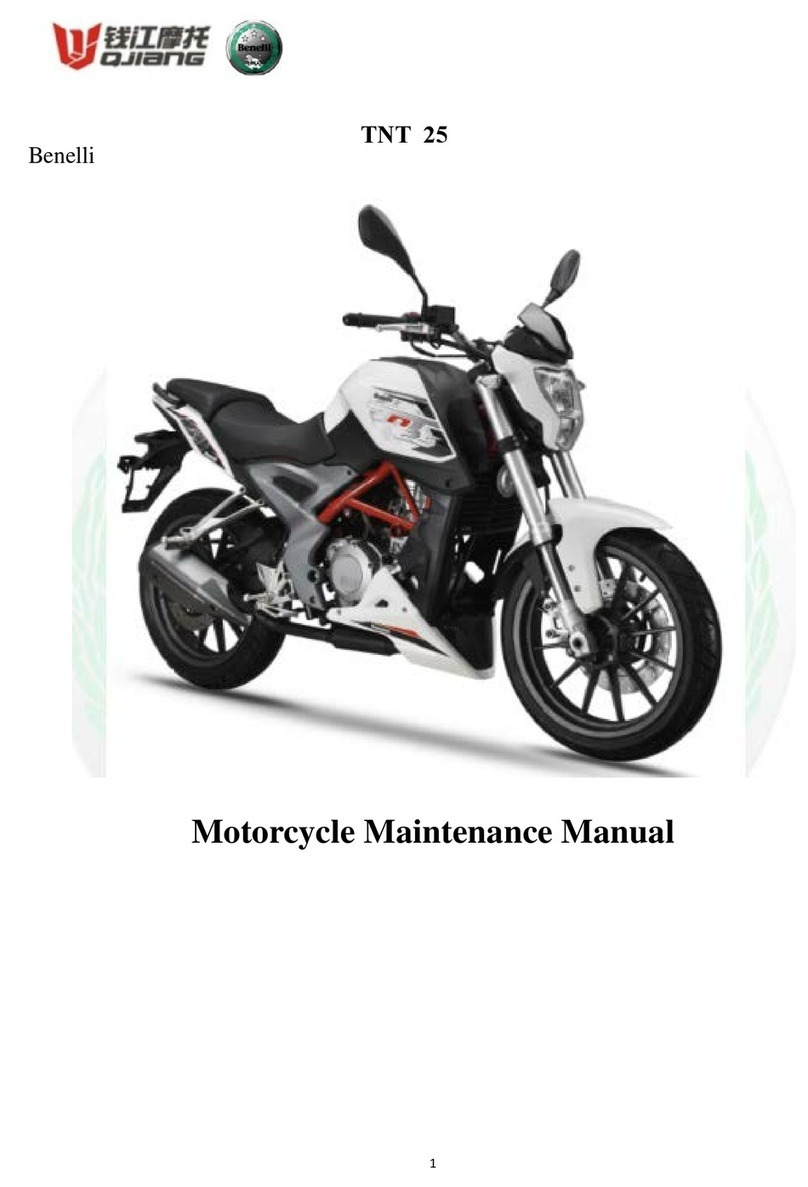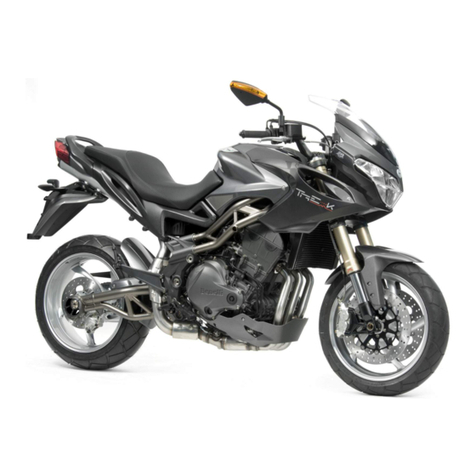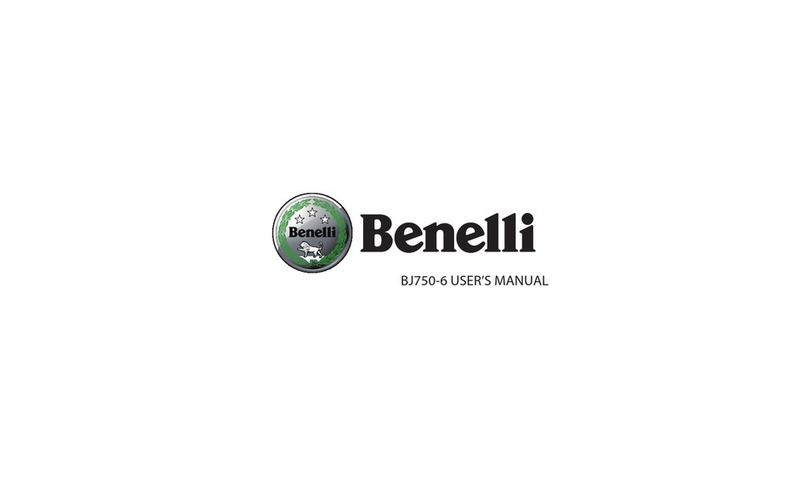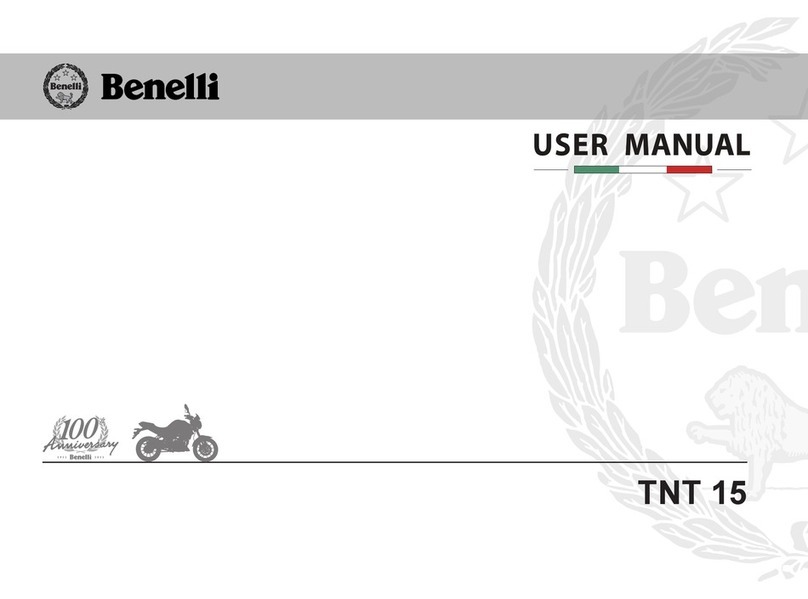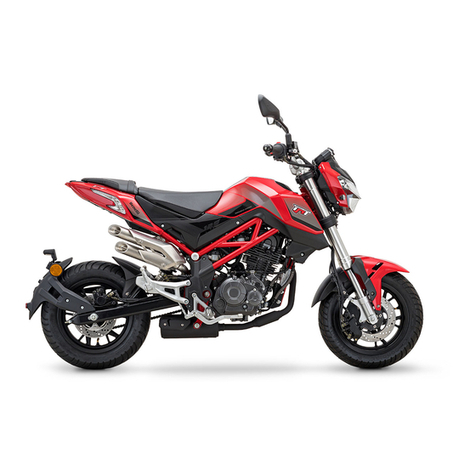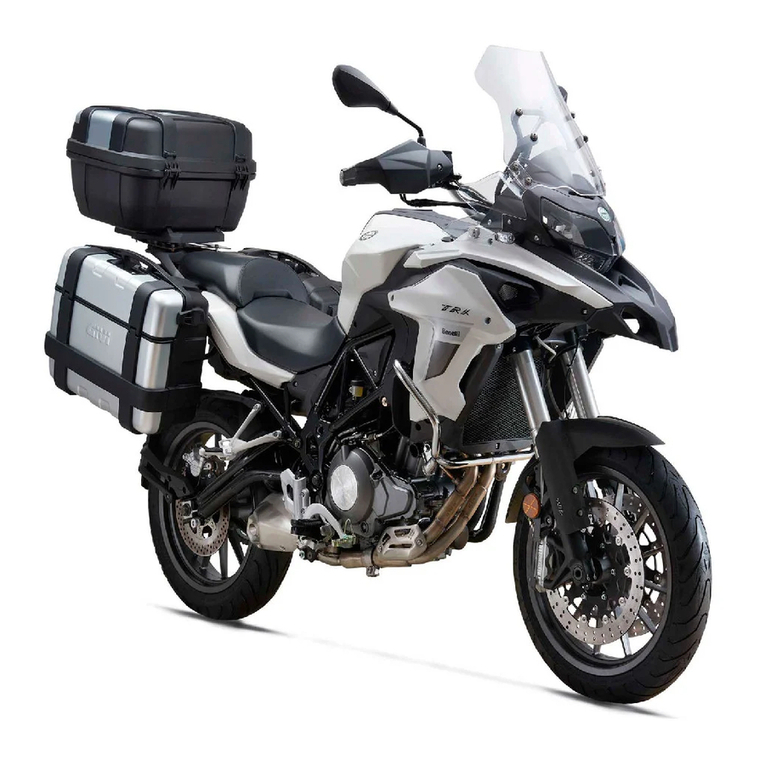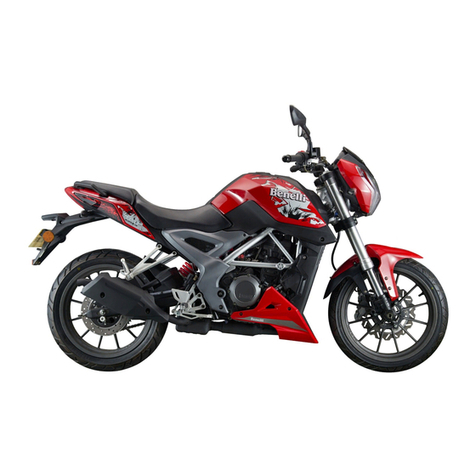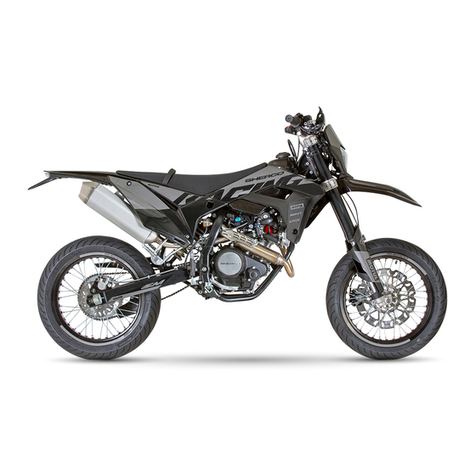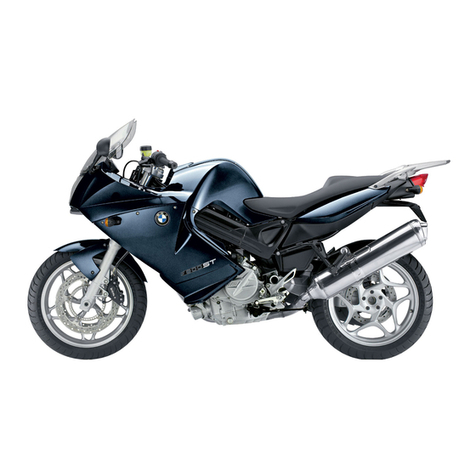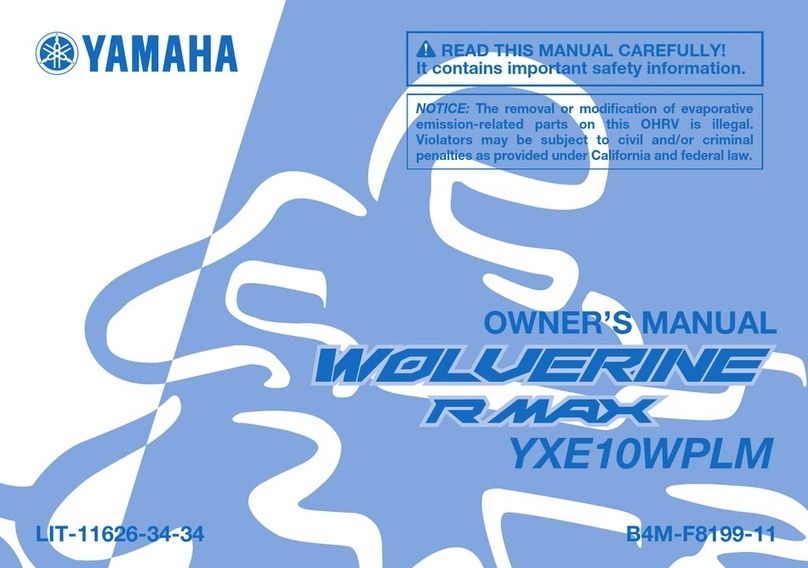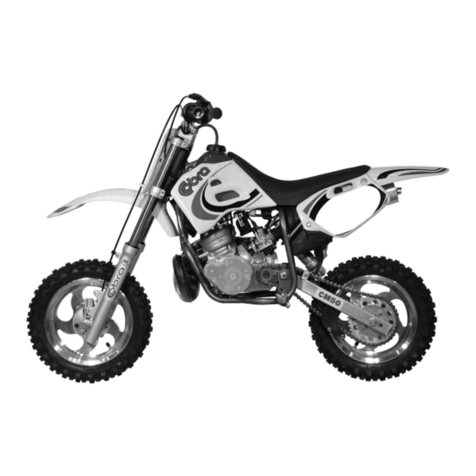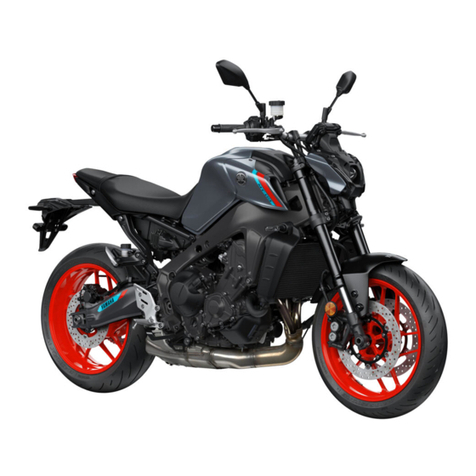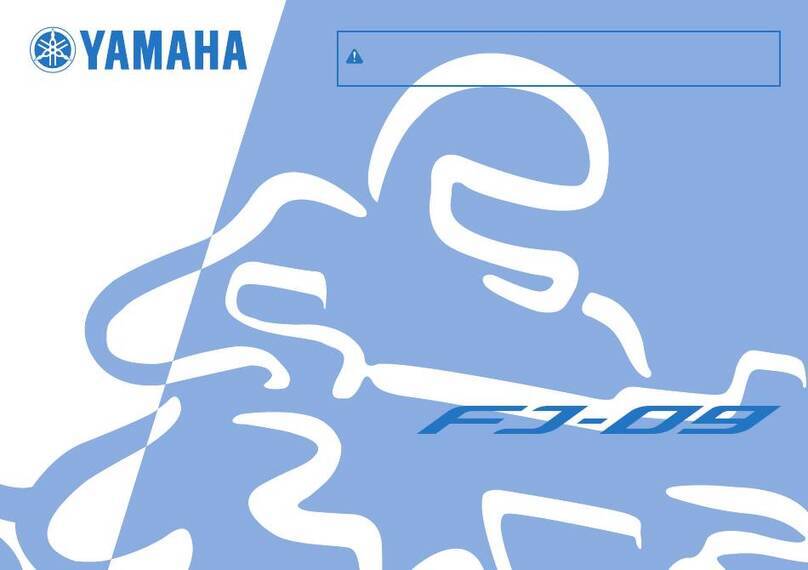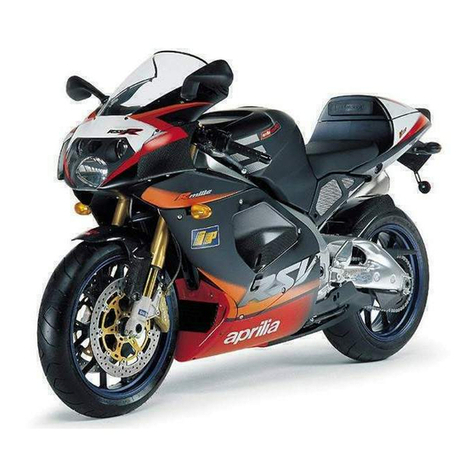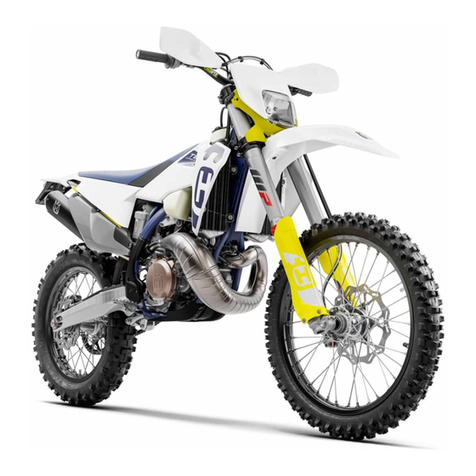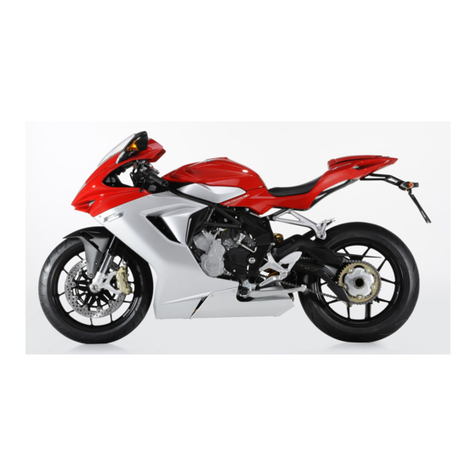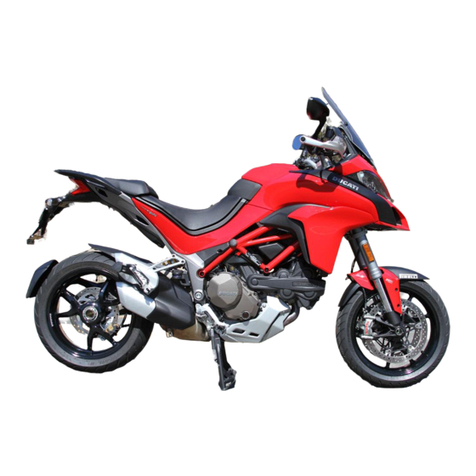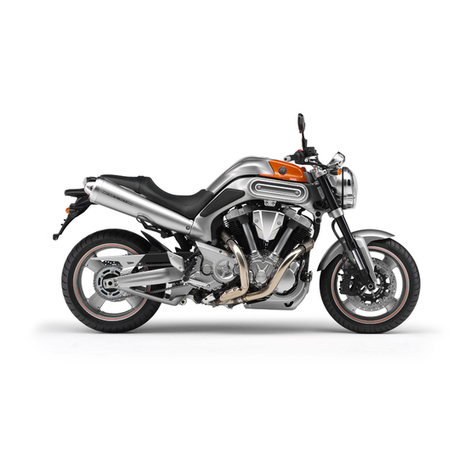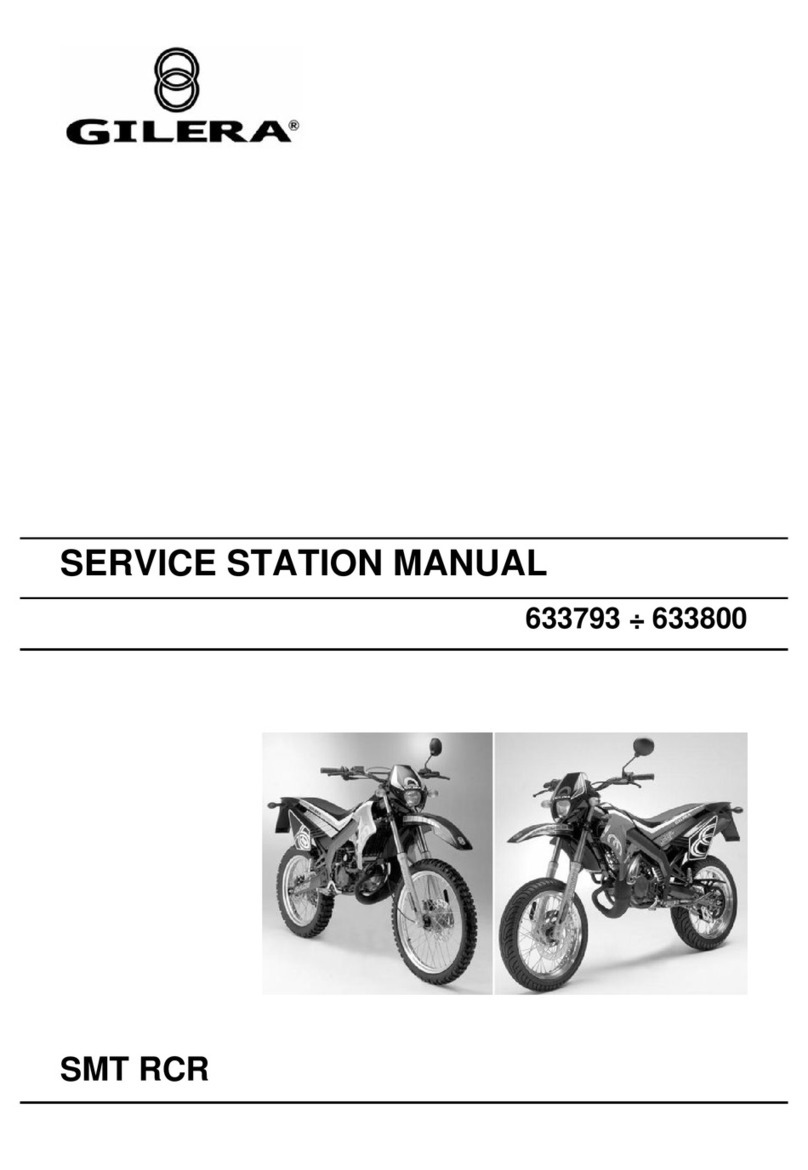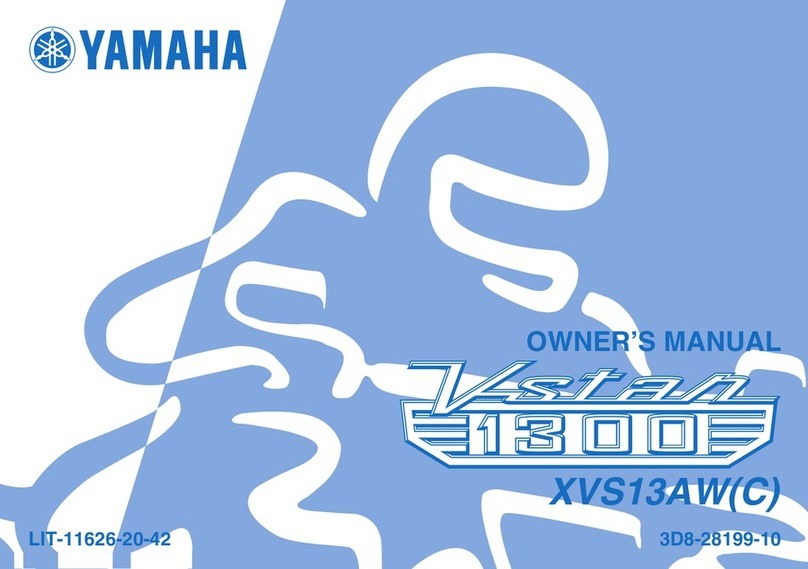
4
thoroughly familiar with the vehicle and all of its con-
trols.
●Many accidents have been caused by error of the
vehicle operator. A typical error made by the operator
is veering wide on a turn due to excessive speed or
under- cornering (insufficient lean angle for the
speed).
•Always obey the speed limit and never travel faster
than legal speed limit.
•Always signal before turning or changing lanes.
Make sure that other motorists can see you.
●The posture of the operator and passenger is
important for proper control.
•The operator should keep both hands on the han-
dlebar and both feet on the operator footrests during
operation to maintain control of the vehicle.
•The passenger should always hold onto the opera-
tor, the seat strap or grab bar, if equipped, with both
hands and keep both feet on the passenger foot-
rests. Nevercarry a passengerunless he orshe can
firmly place both feet on the passenger footrests.
●Never ride under the influence of alcohol or other
drugs.
●This vehicle is designed for on-road use only. It is
not suitable for off-road use.
Protective apparel
The majority of fatalities from vehicle accidents are
the result of head injuries. The use of a safety helmet
is the most critical factor in the prevention or reduc-
tion of head injuries.
●Always wear an approved helmet.
●Wear a face shield or goggles.
Wind in your unprotected eyes could contribute to an
impairment of vision that could delay seeing a
hazard.
●The use of a jacket, substantial shoes, trousers,
gloves, etc., is effective in preventing or reducing
abrasions or lacerations.
●Never wear loose-fitting clothes, otherwise they
could catch on the control levers or wheels and
cause injury or an accident.
●Always wear protective clothing that covers your
legs, ankles, and feet. The engine or exhaust sys-
tem become very hot during or after operation and
can cause burns.
●A passenger should also observe the above pre-
cautions.
Avoid Carbon Monoxide Poisoning.
All engineexhaust contains carbonmonoxide, a
deadly gas. Breathing carbon monoxide can cause
headaches, dizziness, drowsiness, nausea confu-
sion, and eventually death.
Carbon Monoxide is a colorless, odorless, tasteless
gas which may be present even if you do not see




















